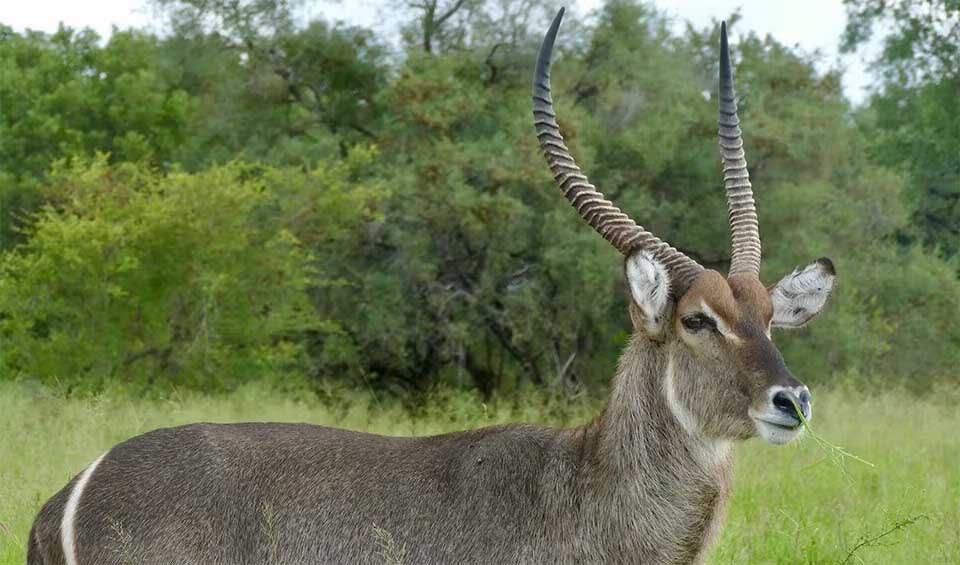Waterbucks, the robust and stately antelopes of the African savanna, offer a compelling study in adaptation and survival in the proximity of aquatic environments. Despite their name suggesting a purely aquatic lifestyle, waterbucks predominantly inhabit the fringes of grasslands, swamps, and water bodies, skillfully navigating the balance between land and water. Their presence in these transitional zones is not arbitrary but a strategic choice that enhances their survival prospects in the challenging African wilderness.
As grazers, waterbucks exhibit remarkable dietary flexibility that allows them to exploit a niche that many other herbivores avoid. Their preference for coarse grasses, which are often bypassed by other grazing species, minimizes competition for food resources. This dietary preference underscores the waterbuck’s adaptability and its role in the ecosystem as a consumer of less palatable vegetation, contributing to the maintenance of grassland health and diversity. On occasions when grasses are scarce or nutritional needs dictate, waterbucks will supplement their diet with the leaves of certain bushes and trees.
The daily routines of waterbucks, characterized by feeding during the cooler hours of the morning and evening and resting or ruminating throughout the day, are attuned to the rhythms of their environment. This pattern of activity helps them conserve energy and avoid the midday heat, a critical adaptation in the often harsh climates they inhabit.
However, the increasing presence of human activity within their habitats has prompted significant behavioral adjustments in waterbuck populations. In areas where human disturbance is high, waterbucks have shown a remarkable shift towards nocturnal behavior, grazing under the cover of darkness to avoid contact with humans. This shift not only illustrates the waterbuck’s capacity for behavioral adaptation but also highlights the broader impacts of human activity on wildlife behavior and ecosystem dynamics.
Distribution
 Angola
Angola Benin
Benin Botswana
Botswana Burkina Faso
Burkina Faso Burundi
Burundi Cameroon
Cameroon Central Af. Rep.
Central Af. Rep. Chad
Chad Congo-Brazzaville
Congo-Brazzaville Côte D’ivoire
Côte D’ivoire DR Congo (Kinshasa)
DR Congo (Kinshasa) Eritrea
Eritrea Eswatini
Eswatini Ethiopia
Ethiopia Gabon
Gabon Gambia
Gambia Ghana
Ghana Guinea-Bissau
Guinea-Bissau Guinea
Guinea Kenya
Kenya Malawi
Malawi Mali
Mali Mozambique
Mozambique Namibia
Namibia Niger
Niger Nigeria
Nigeria Rwanda
Rwanda Senegal
Senegal Sierra Leone
Sierra Leone Somalia
Somalia South Africa
South Africa South Sudan
South Sudan Sudan
Sudan Tanzania
Tanzania Togo
Togo Uganda
Uganda Zambia
Zambia Zimbabwe
ZimbabweAnything we've missed?
Help us improve this page by suggesting edits. Glory never dies!
Suggest an editGet to know me
Terrestrial / Aquatic
Altricial / Precocial
Polygamous / Monogamous
Dimorphic (size) / Monomorphic
Active: Diurnal / Nocturnal
Social behavior: Solitary / Pack / Herd
Diet: Carnivore / Herbivore / Omnivore / Piscivorous / Insectivore
Migratory: Yes / No
Domesticated: Yes / No
Dangerous: Yes / No
Waterbuck on banknotes






